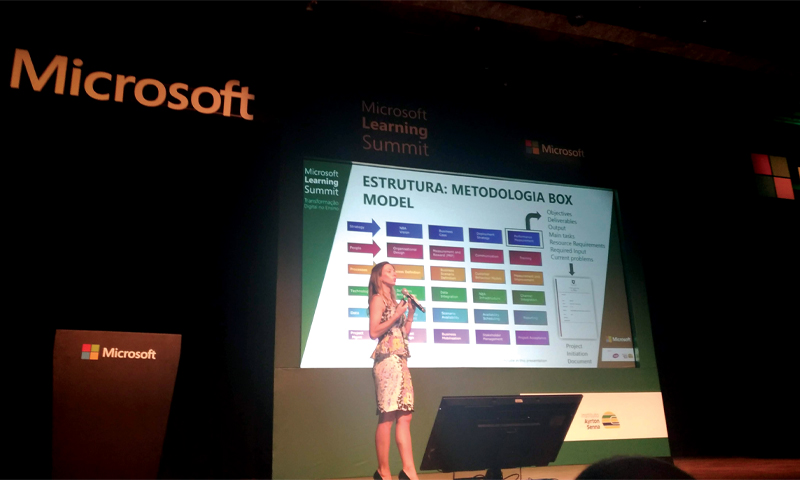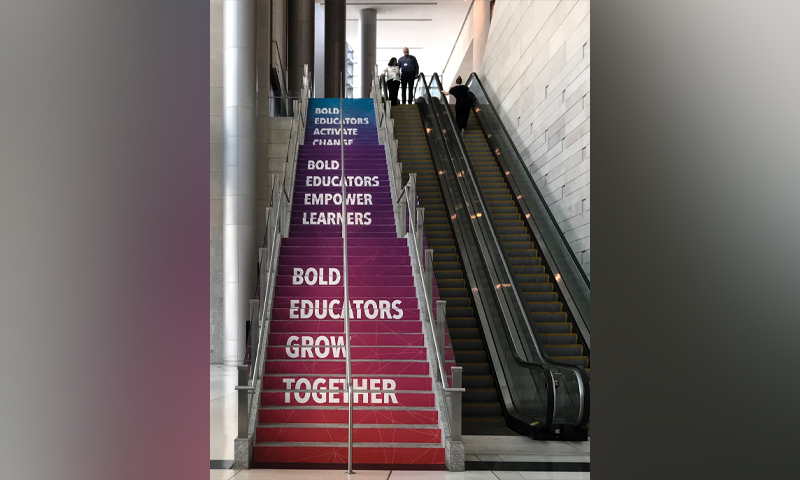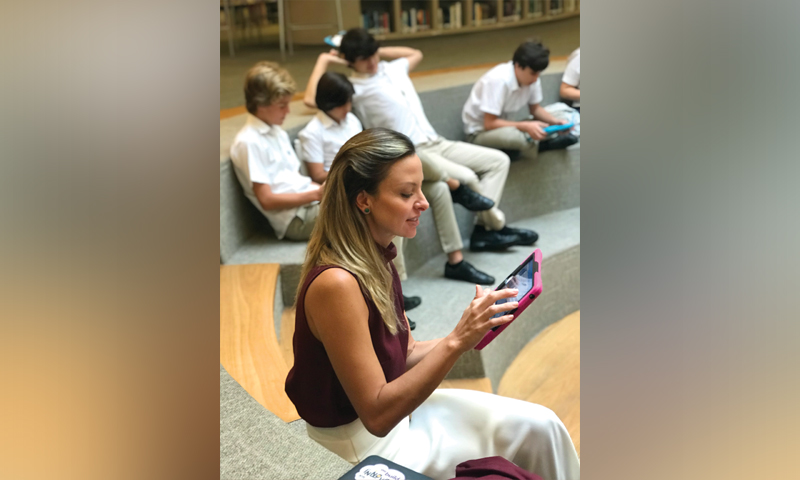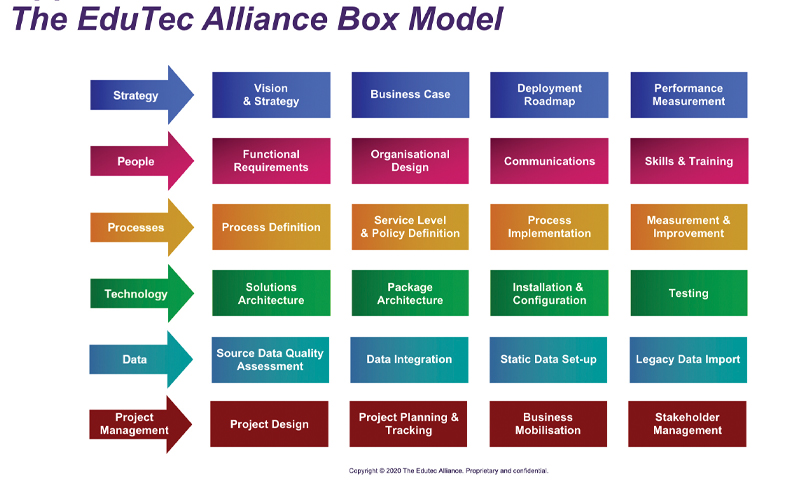The EduTec Alliance is a membership-based organization that helps schools across the globe to implement and use educational technology. Glaucia is the former Head of Digital Learning at St. Paul’s School, the prestigious British international school in Sao Paulo, Brazil. She is also the former Education Technology Coordinator at Cognita School. Under her leadership, St. Paul’s designed and implemented it’s Digital Learning strategy, for which it received the Microsoft Showcase School and Apple Distinguished School awards. Glaucia is a qualified teacher and holds a Business Management and Finance degree. She received her Masters degree from Johns Hopkins School of Education on Digital Age Learning and Educational Technology. During her career, she has specialised in School Management, School Leadership and Financial Management. Glaucia has delivered numerous workshops for teachers and school leaders in schools and spoken at conferences worldwide on leadership, innovation and digital culture for learning institutions.
Coming from a family of entrepreneurs, I have always been immersed in business management. My parents had just started a plastic business when I was born, and I remember learning to ride a bike whilst counting the merchandise in the factory’s warehouse. This environment strongly influenced me to choose Business Management and Finance to be my area of study.
As I started my professional life, it didn’t take long for me to notice that my entrepreneurial skills were not meant to be applied in the plastic business, but rather to something much more special. My country, Brazil, which is one of the wealthiest countries in the world in terms of natural resources, had immense difficulties in translating its potential into economic development, and I was determined to find a way to contribute to unravelling that dilemma. As the relationship between quality education and long-term growth has proven to be extremely strong, I decided that if I was to be an entrepreneur, I had to work in the education sector.
Brazil has 48 million k-12 students served by one hundred and eighty thousand private and public schools. I thought that if I wanted to understand education, I had to be inside a school to empathise with the issues and challenges that teachers, students, parents and school leaders face. I trained as a teacher and worked in local and international schools in São Paulo for over a decade. As I had a corporate background, I was always advocating for the use of technology to make the school processes more efficient. Hence, it didn’t take long for me to move from a full-time teaching position to Technology Coordinator and later on, when I specialised in education technology, to Head of Digital Learning.
I am an explorer, which makes me very curious and socially dynamic. During my journey in education, I have visited various public and private schools across the globe and connected with countless educators and leaders in the sector. It fascinates me to see how different organisations approach education and to learn about the challenges that schools face and how they manage to overcome it. I can undoubtedly say that integrating technology was hardly at their top priorities list for a long time.

The education sector is massively under-digitalised; according to a report by HolonIQ, only 3% of global education expenditure was spent on technology pre- COVID. Whilst other business sectors were debating blockchain and adopting artificial intelligence, most schools I visited hadn’t passed the cloud computing markyet. Their understanding of educational technology was limited to having sets of computers and tablets in carts, offering robotic lessons and building maker labs. Most schools that invested in educational technology had simply bought devices and hired teacher trainers without a cohesive strategy as to how to use them. More often than not, money was spent, but the benefit was short term. In the worst cases, technology was used poorly and unstructured, student performance dropped, projects failed, and technology users were disgruntled. Few schools had any vision for how educational technology was going to improve their performance.
“When the tide goes out, you see who’s been swimming naked.”
When 191 governments closed down schools in response to the COVID pandemic, 1.6 billion children were affected, and priorities quickly changed. With the need to rapidly adapt to remote working and teaching, schools have had to accelerate their pace of technology adoption, breaking century-old process cycles that may otherwise have taken decades to be transformed.
Schools with a robust install base of educational technology, a shared vision and a solid digital learning strategy in place were able to navigate this crisis. The online tools and environments they used were aligned with the school’s needs, and the community was well trained and prepared to use them.

These schools are now able to use their experiences to improve their current strategy and are ready to start taking the next steps in their educational technology journey.
But this was far from the reality of the majority of schools. On average, schools that could afford made a vast investment in online learning platforms, video conferencing tools, and online learning apps and then trained teachers to technically use the tools as quickly as possible to be able to continue their operations. But the pressure to move to the online environment and the lack of knowledge and careful planning using a systematic instructional design model impacted the quality of online teaching. Hence, emergency remote teaching was mostly based on information transmission and schools trying to reproduce what they had in presential mode.
At the end of this cycle, these schools will end up with many disparate systems in place that are not integrated as an ecosystem. This in turn will create high operational costs and a very variable set of digital learning experiences across subjects.
Long term Direction and Stability for Educational Technology in the School
When I was working as Head of Digital Learning at a prestigious British School in São Paulo, I was lucky to be sponsored by a brilliant man named James Wilkinson, a school board member who had spent 35 years travelling the world designing and implementing advanced technology solutions for major corporations. He had developed a unique methodology for such projects, which we adapted to meet the unique characteristics of schools, allowing us to achieve a rapid sequence of project successes. Very quickly, the school was recognised for its digital learning strategy and innovative use of technology in education.

On many occasions, I had shared our project methodology – affectionately known as the ‘Box Model’- and lessons learned with other education leaders who wanted to know about our work. But aware of the more significant challenges that the schools were facing in 2020, James and I decided to launch The EduTec Alliance and allow worldwide access to our winning strategies.
The EduTec Alliance is a membership-based organisation for schools around the globe purely focused on educational technology. When “joining the club”, we work with our members to develop an inventory of all of their systems and develop a vision and a strategy for their educational technology. To assess performance and progress we annually benchmark our members across two different but complementary dimensions; Cross-Industry Best Practice and international Society for Technology in Education (ISTE) Standards.
Because we operate on a membership basis, we also provide a forum where member school leaders can connect and share experiences and best practices, learning from one another. This is our way of building a community and fostering the development of educational technology amongst our members.
Our membership fees pay for the day to day running of the organisation, allowing us to produce our extensive content and training materials which all schools can access for free at our website www.edutecalliance.com and our YouTube channels. Our members seem to relish the fact that they are helping themselves whilst helping others at the same time.
The Box Model Disclosed
On the website, we offer open access to our sample documents and training videos on how to use our project management approach – The Box Model. It is based on structure, rigour and clear communication. It’s simple, sensible and just works.

The model comprised of six horizontal rows, known as ‘Strands’, and the individual boxes, that are called ‘Work Packages’:
1. Strategy Strand:
• Vision is about envisioning how your school will look once the project is in place
• Business Case is about weighing the costs of the project against its benefits
• Deployment Strategy is about defining the roadmap for implementation
• Performance Measurement is about defining how to measure project success.
2. People Strand
• Requirements of the project are defined by the stakeholders and normalised
• Organisational Design concerns the changes to the organisation required to accommodate the project
• Communication is about communicating a project to stakeholders (involves change management)
• Skills and Training is about identifying skills gaps and training and filling them
3. Process Strand
• Process Definition is about defining processes to be followed in day to day operations
• Service Level and Policy Definition is about defining the rules that will be applied to the processes
• Process Implementation is about implementing the proposed processes within the school
• Measurement & Improvement is about defining how to monitor the success of the project and identify improvement opportunities.
4. Technology Strand
• Solutions Architecture is about identifying how the technology solution will integrate with the existing environment
• Package Architecture is about defining in detail the configuration, customisation and integration of the solution within the school’s existing technology ecosystem
• Installation & configuration is about configuring and integrating all the technology
• Testing is about testing each component individually to check that it’s working; testing the processes defined to check that the technology supports the operation envisioned; testing the project under load.
5. Data Strand
• Source Data is checking the quality and availability of data required from other systems
• Data Integration is about connecting the new solution to its data feeds
• Static Data is about uploading data to the new system
• Legacy Import is about converting data from an existing system
6. Project Management Strand
• Project Design is about defining the roles and responsibilities
• Project Planning and Tracking is about developing a timeline to help track progress.
• Business Mobilisation is about getting your school ready to accept and adopt the project
• Stakeholder Management is about keeping all the relevant people informed




